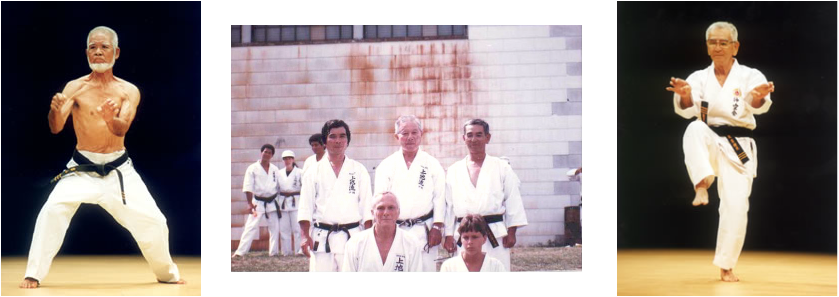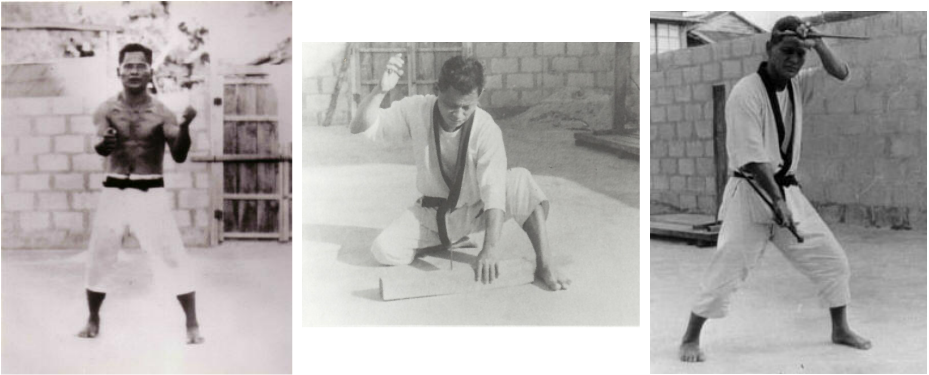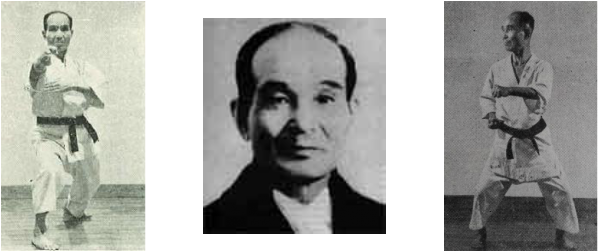Uechi Ryu - Kanbun Uechi
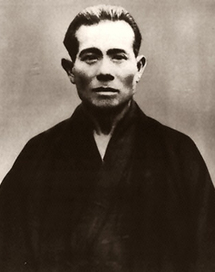
Kanbun Uechi was the founding Grand Master in whose honor the Karate system of Uechi-Ryu (Pronounced Waychee-Roo) Karate is named. Kanbun studied at the Central temple in the Fukien Province of Southern China during the years 1897 - 1910. The Chinese name for this System of Karate is Pan-gai-noon (Pronounced Pwang-gay-noon), which means half-hard half-soft. Kanbun studied under a famous Chinese teacher whom the Okinawans call Shushiwa (Chou Tsu Ho), who, it is said, learned directly from a Buddhist Monk in one of the famous Southern Shaolin temples. Kanbun's reasons for leaving Okinawa were twofold. Probably the main reason was to learn the superior art of Chinese fighting. During the 18th and 19th centuries, most of the great Okinawan teachers went to China to study the ancient art of self-defense.
Since 1879, under Japan's rule, Okinawan youths were forced to serve in the Japanese army. The older generation, which included Kanbun's parents, fearful of inviting invasion from Japan's enemies should an armed force be maintained in Okinawa, strongly opposed this military conscription. Women prayed daily at the Shinto Shrines and Buddhist temples that their husbands and sons would be unfit for military service. Encouraged by his parents Kanbun quietly left the Island of Okinawa, bound for unknown adventures in China, early in 1897. Although little is known of Kanbun's 13 years in China, he occasionally told his students stories relating to his travels and study of Karate. His son Kanei did say that Kanbun directed all his energies toward the mastery of karate. He learned not only the physical art, which included Chinese medicine, but also the underlying philosophy of the art that made such a lasting impression on him.
It is important to note that the original style of Pan-gai-noon, originally learned by Kanbun, was represented by only three kata: San-chin, Sei-san, and San-sei-ryu. It is Kanbun's son, Kanei, who modernized the ancient art, with the development of five additional kata, and two prearranged sparring exercises, Kyu and Dan Kumite. Bunkai, or application of kata, have also been designed for two of the eight kata. There are extensions and further applications, involving additional bunkai and kumite which are taught in the varying dojos, but the general format of the art including warm up exercises, kata, and the two main kumite are for the most part universal.
After ten years of study, Kanbun obtained permission to open his own school. With great initial difficulty, Kanbun set up a school in the province of Nansoue. Kanbun was warned not to open the school there as others had tried and failed. Kanbun replied by saying that he wished to test his karate ability by teaching there, because he liked the area. In time, despite a few run-ins, his reputation grew until he finally had a successful school with many students, including Mr. Gokenkein, who was the one who told Kanbun that it was not a good idea to open a school there. Kanbun Uechi had the distinction of being the only Okinawan to have actually taught in China and to be accepted as a teacher.
Kanbun was quite happy in this village and was doing well as a teacher when unfortunately one of his students, who by nature was quiet and unassuming, was provoked into an argument over a boundary dispute. His opponent viciously attacked the student who instinctively defended himself and accidentally struck his attacker with a fatal blow. The village people blamed his death on Kanbun, since he had instructed this student, it was then that the respect of the village turned to distrust and hatred against Kanbun. Kanbun had been teaching in China for about three years before he returned to Okinawa, vowing never to teach karate again or ever to speak about it. There are many versions of the story of how Kanbun Uechi began his teaching career once again; most are partially true. The following story was told by Kanei Uechi (Kanbun's son) and confirmed by Kanbun's first student, Ryuyu Tomoyose.
Kanbun Uechi returned to Okinawa in 1910, married, and although being born into a samurai class, began farming in the southern part of the island near Naha. Life was uneventful for Kanbun during these years. Then, about two years after Kanbun's return to Okinawa, Mr. Gokenkein, a Chinese tea merchant and former student of Kanbun, visited Okinawa on business. Mr. Gokenkein, urged Kanbun to resume teaching but with no success. Gokenkein became involved in a fight with a Naha Karate teacher. When Gokenkein defeated the teacher, many other teachers challenged him, but none were able to defeat Gokenkein. Then many young men visited him, asking that he instruct them in his style of karate. Gokenkein would tell them that there lived in Okinawa a truly great karate expert who had been his teacher in China. Soon Kanbun's reputation grew and spread, even though no one had ever seen him perform. Many young men visited Kanbun, asking that he teach, but he would reply that they must have mistaken him for somebody else. Finally the townspeople confronted Kanbun with Gokenkein. After that he was unable to deny the stories but still refused to discuss karate or demonstrate a kata.
Every year the Motobu Police department had a large celebration and all of the karate schools demonstrated their skills. The other teachers who were eager to see proof of Kanbun's ability, asked the mayor of Motobu to request that he demonstrate at the celebration. They would see that Kanbun attended and was seated so near the stage that if he refused the mayor's request he would lose face. The plot worked, for when the mayor asked Kanbun to demonstrate, the other teachers who were standing close by, playfully pushed Kanbun onto the stage. Eyes glaring, Kanbun performed the kata Sei-san very fast and beautifully, with such strength and power that after he had finished, jumped down from the stage and proceeded home, the karate part of the celebration had ended, for no one else wished to follow Kanbun's demonstration.
From that time on, he was respected throughout Okinawa as a truly great karate expert. Itosu Anko, a great karate expert for the Shorin system, and a karate professor at the teacher's college in Okinawa, asked Kanbun to accept a position. There was so much pressure from different sources that Kanbun Uechi finally left Okinawa for Japan in 1924. While in Japan, Kanbun lived in a housing compound in Wakiyama Prefecture near Osaka. There he met an alert and aggressive young Okinawan, a neighbor by the name of Ryuyu Tomoyose. Purely by accident Ryuyu suspected that Kanbun knew karate. One evening, he fabricated a story about being in a fight. He described a fictitious attack, then said that he did not know what he should have done. After hearing this, Kanbun became very excited and explained to Ryuyu what he should have done. Each night for a week Ryuyu came to Kanbun with a different attacking situation and each night Kanbun would explain in detail what he should have done. After realizing that he could not continue this ruse for long, Ryuyu confronted Kanbun with the fact that he know of Kanbun's ability and implored Kanbun to give him lessons. Kanbun refused at first, but finally agreed because of their friendship on the condition that Ryuyu would never tell anyone else.
Two years later, Ryuyu asked Kanbun to teach the public, saying that if he did not teach, the art form would soon die out and something so good should be given to other people. Finally Kanbun consented. Ryuyu recruited many students, mostly Okinawans like himself. Kanbun continued to teach in Wakiyama Prefecture until 1947.
Since 1879, under Japan's rule, Okinawan youths were forced to serve in the Japanese army. The older generation, which included Kanbun's parents, fearful of inviting invasion from Japan's enemies should an armed force be maintained in Okinawa, strongly opposed this military conscription. Women prayed daily at the Shinto Shrines and Buddhist temples that their husbands and sons would be unfit for military service. Encouraged by his parents Kanbun quietly left the Island of Okinawa, bound for unknown adventures in China, early in 1897. Although little is known of Kanbun's 13 years in China, he occasionally told his students stories relating to his travels and study of Karate. His son Kanei did say that Kanbun directed all his energies toward the mastery of karate. He learned not only the physical art, which included Chinese medicine, but also the underlying philosophy of the art that made such a lasting impression on him.
It is important to note that the original style of Pan-gai-noon, originally learned by Kanbun, was represented by only three kata: San-chin, Sei-san, and San-sei-ryu. It is Kanbun's son, Kanei, who modernized the ancient art, with the development of five additional kata, and two prearranged sparring exercises, Kyu and Dan Kumite. Bunkai, or application of kata, have also been designed for two of the eight kata. There are extensions and further applications, involving additional bunkai and kumite which are taught in the varying dojos, but the general format of the art including warm up exercises, kata, and the two main kumite are for the most part universal.
After ten years of study, Kanbun obtained permission to open his own school. With great initial difficulty, Kanbun set up a school in the province of Nansoue. Kanbun was warned not to open the school there as others had tried and failed. Kanbun replied by saying that he wished to test his karate ability by teaching there, because he liked the area. In time, despite a few run-ins, his reputation grew until he finally had a successful school with many students, including Mr. Gokenkein, who was the one who told Kanbun that it was not a good idea to open a school there. Kanbun Uechi had the distinction of being the only Okinawan to have actually taught in China and to be accepted as a teacher.
Kanbun was quite happy in this village and was doing well as a teacher when unfortunately one of his students, who by nature was quiet and unassuming, was provoked into an argument over a boundary dispute. His opponent viciously attacked the student who instinctively defended himself and accidentally struck his attacker with a fatal blow. The village people blamed his death on Kanbun, since he had instructed this student, it was then that the respect of the village turned to distrust and hatred against Kanbun. Kanbun had been teaching in China for about three years before he returned to Okinawa, vowing never to teach karate again or ever to speak about it. There are many versions of the story of how Kanbun Uechi began his teaching career once again; most are partially true. The following story was told by Kanei Uechi (Kanbun's son) and confirmed by Kanbun's first student, Ryuyu Tomoyose.
Kanbun Uechi returned to Okinawa in 1910, married, and although being born into a samurai class, began farming in the southern part of the island near Naha. Life was uneventful for Kanbun during these years. Then, about two years after Kanbun's return to Okinawa, Mr. Gokenkein, a Chinese tea merchant and former student of Kanbun, visited Okinawa on business. Mr. Gokenkein, urged Kanbun to resume teaching but with no success. Gokenkein became involved in a fight with a Naha Karate teacher. When Gokenkein defeated the teacher, many other teachers challenged him, but none were able to defeat Gokenkein. Then many young men visited him, asking that he instruct them in his style of karate. Gokenkein would tell them that there lived in Okinawa a truly great karate expert who had been his teacher in China. Soon Kanbun's reputation grew and spread, even though no one had ever seen him perform. Many young men visited Kanbun, asking that he teach, but he would reply that they must have mistaken him for somebody else. Finally the townspeople confronted Kanbun with Gokenkein. After that he was unable to deny the stories but still refused to discuss karate or demonstrate a kata.
Every year the Motobu Police department had a large celebration and all of the karate schools demonstrated their skills. The other teachers who were eager to see proof of Kanbun's ability, asked the mayor of Motobu to request that he demonstrate at the celebration. They would see that Kanbun attended and was seated so near the stage that if he refused the mayor's request he would lose face. The plot worked, for when the mayor asked Kanbun to demonstrate, the other teachers who were standing close by, playfully pushed Kanbun onto the stage. Eyes glaring, Kanbun performed the kata Sei-san very fast and beautifully, with such strength and power that after he had finished, jumped down from the stage and proceeded home, the karate part of the celebration had ended, for no one else wished to follow Kanbun's demonstration.
From that time on, he was respected throughout Okinawa as a truly great karate expert. Itosu Anko, a great karate expert for the Shorin system, and a karate professor at the teacher's college in Okinawa, asked Kanbun to accept a position. There was so much pressure from different sources that Kanbun Uechi finally left Okinawa for Japan in 1924. While in Japan, Kanbun lived in a housing compound in Wakiyama Prefecture near Osaka. There he met an alert and aggressive young Okinawan, a neighbor by the name of Ryuyu Tomoyose. Purely by accident Ryuyu suspected that Kanbun knew karate. One evening, he fabricated a story about being in a fight. He described a fictitious attack, then said that he did not know what he should have done. After hearing this, Kanbun became very excited and explained to Ryuyu what he should have done. Each night for a week Ryuyu came to Kanbun with a different attacking situation and each night Kanbun would explain in detail what he should have done. After realizing that he could not continue this ruse for long, Ryuyu confronted Kanbun with the fact that he know of Kanbun's ability and implored Kanbun to give him lessons. Kanbun refused at first, but finally agreed because of their friendship on the condition that Ryuyu would never tell anyone else.
Two years later, Ryuyu asked Kanbun to teach the public, saying that if he did not teach, the art form would soon die out and something so good should be given to other people. Finally Kanbun consented. Ryuyu recruited many students, mostly Okinawans like himself. Kanbun continued to teach in Wakiyama Prefecture until 1947.
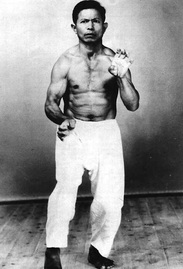
His son, Kanei Uechi, began his study of karate in 1930 under his father's guidance, in Japan. He studied for 10 years, then opened his own school in Osaka for two years. He then returned to Okinawa, married and settled down as a farmer for a short time in Nago. Ryuko Tomoyose, son of Ryuyu, was living in Futenma, Okinawa, when he learned from his father that Kanei was in Okinawa. Ryuko found Kanei and persuaded him to teach. Ryuko and a group of karate students then built a dojo for Kanei and brought him to Futenma to teach. Kanei actively taught there until his illness and death. The dojo is situated at the top of the highest hill in Futenma.
Up through the mid 1990's, Uechi-Ryu has grown from one small dojo too many. Uechi-Ryu karate since 1942 grew faster than any other art of karate in Okinawa. Kanei's brother teaches in Nago, Okinawa. He studied under Kanei when he returned from Japan. Kanei Uechi was the last unquestioned Grand Master of the style, a 10th degree black belt, and, at the time, the only one of this rank. His son, Kamei currently leads the family’s fighting system.
Up through the mid 1990's, Uechi-Ryu has grown from one small dojo too many. Uechi-Ryu karate since 1942 grew faster than any other art of karate in Okinawa. Kanei's brother teaches in Nago, Okinawa. He studied under Kanei when he returned from Japan. Kanei Uechi was the last unquestioned Grand Master of the style, a 10th degree black belt, and, at the time, the only one of this rank. His son, Kamei currently leads the family’s fighting system.
Isshin Ryu - Tatsuo Shimabuku
Born Shinkichi Shimabukuro (Tatsuo) on September 19, 1908. Shimabuku was one of ten children. He was born in Kyan village, but raised in Chun village. At eight years old, he walked many miles each way to ask his uncle, Irshu Matsumora, for karate lessons. At first, his uncle refused and made him sweep the floor, but little Shinkichi kept coming back, and that determination persuaded his uncle to give him lessons. He soon demonstrated such talent and dedication that his uncle introduced him to another Grand master. Gajoko Chioyu, who soon introduced the boy to Grand master Chotoku Kyan. the leader of the Shobayashiryu branch of Shorin-ryu karate. By the age of 13, Shimabuku knew he wanted to devote his life to karate, and took the adult name Tatsuo, which means 'Dragon Man'.
Tatsuo became one of Kyan's top students, but he also studied Gojo-ryu under its founder Chojun Miyagi. He also studied under the notorious fighting master Choki Motobu, who taught the Kobayashi-ryu version of Shorin-ryu. Tatsuo regarded Kyan, Miyagi, and Motobu as his most influential teachers, and kept portraits of them in his own dojo in a place of honor. He learned Okinawan weapons, Kobudo, from Taira Shinkin and Yabiku Moden. In later years, Shimabuku visited China to collect even more knowledge of the martial arts. He also experimented, having his students wear full contact armor, to prove which techniques worked the best.
After more than 30 years of study and experimentation, he formulated his own system of karate. He took the best principles and techniques from the styles he studied, two empty hand katas from Gojo-ryu ( Sanchin & Seiuchin), five from Shorin-ryu (Seisan, Naihanchi, Wansu, Chinto and Kusanku), one composed by Shimabuku himself (Sunsu), and five weapons katas (3 bo-staff- ergo: Tokomine no kun no dai, Urashi-bo & Bo shishi no kun) & (2 sai-ergo: Kusanku sai & Chatan Yaya no sai) plus a number of innovations based on his own observations, such as the vertical fist, and the snap punch. He also practiced Kyan no sai, and Tuifa katas.
The official birthday for Isshin-ryu is January 15, 1954. The name Isshin-ryu, meaning "One Heart Style" came from Eiko Kaneshi, one of Shimabuku's best Okinawan students. Kaneshi's uncle created the original Mizu-Gami painting, according to Shimabuku's instructions to symbolize the philosophical and spiritual aspects of Isshin-ryu. Shimabuku believed the principles of Isshin-ryu were not just for fighting, but for all of life. Grand master Shimabuku Tatsuo died on May 30,1975 at peace with himself and the art he inspired. Today, Isshin-ryu masters in Okinawa include Kichiro Shimabuku (Tatsuo's oldest son), Shinsho Shimabuku (Tatsuo's second son, who actually was a black belt before his older brother), and Angi Uezu (Tatsuo's son-in-law).
Tatsuo became one of Kyan's top students, but he also studied Gojo-ryu under its founder Chojun Miyagi. He also studied under the notorious fighting master Choki Motobu, who taught the Kobayashi-ryu version of Shorin-ryu. Tatsuo regarded Kyan, Miyagi, and Motobu as his most influential teachers, and kept portraits of them in his own dojo in a place of honor. He learned Okinawan weapons, Kobudo, from Taira Shinkin and Yabiku Moden. In later years, Shimabuku visited China to collect even more knowledge of the martial arts. He also experimented, having his students wear full contact armor, to prove which techniques worked the best.
After more than 30 years of study and experimentation, he formulated his own system of karate. He took the best principles and techniques from the styles he studied, two empty hand katas from Gojo-ryu ( Sanchin & Seiuchin), five from Shorin-ryu (Seisan, Naihanchi, Wansu, Chinto and Kusanku), one composed by Shimabuku himself (Sunsu), and five weapons katas (3 bo-staff- ergo: Tokomine no kun no dai, Urashi-bo & Bo shishi no kun) & (2 sai-ergo: Kusanku sai & Chatan Yaya no sai) plus a number of innovations based on his own observations, such as the vertical fist, and the snap punch. He also practiced Kyan no sai, and Tuifa katas.
The official birthday for Isshin-ryu is January 15, 1954. The name Isshin-ryu, meaning "One Heart Style" came from Eiko Kaneshi, one of Shimabuku's best Okinawan students. Kaneshi's uncle created the original Mizu-Gami painting, according to Shimabuku's instructions to symbolize the philosophical and spiritual aspects of Isshin-ryu. Shimabuku believed the principles of Isshin-ryu were not just for fighting, but for all of life. Grand master Shimabuku Tatsuo died on May 30,1975 at peace with himself and the art he inspired. Today, Isshin-ryu masters in Okinawa include Kichiro Shimabuku (Tatsuo's oldest son), Shinsho Shimabuku (Tatsuo's second son, who actually was a black belt before his older brother), and Angi Uezu (Tatsuo's son-in-law).
Shudokan
Kanken Toyama was born in Shuri, Okinawa in the 21st year of Meiji, 24 September, 1888. His given name was Kanken Oyadamari and he born into a noble family. Toyama Kanken began his formal training in karate-do under Master Itarashiki in 1897. Later, he apprenticed himself to Anko Itosu, who then became his primary teacher. He continued studying under Itosu until the master's death in 1915.
A school teacher by profession, Toyama's chosen field was the instruction of karate-do. In 1907 Toyama was named Shihandai (assistant) to Itosu at the Okinawa Teacher's College in Shuri City, and in 1914 he held a high office at the Shuri First Elementary School. Toyama was one of only two students to be granted the title of Shihanshi (protege); Funakoshi Ginchin was the other to receive this title from Itosu.
In 1924 Toyama Kanken moved his family to Taiwan where he taught elementary school and studied related systems of Chinese Ch'uan Fa ( kempo/kwan-bop ), which included Taku (Hakuda in Japanese language ), Makaitan, Rutaobai, and Ubo. Taku is one of central China's Hotsupu (northern school) Ch'uan Fa and is further classified as Neikung Ch'uan Fa (Shorei Kempo), an internal method. Makaitan and Rutaobai, which the techniques of nukite (spear hand) came, and Ubo, all belong to the Nampa (southern school) Ch'uan Fa and are external methods or Waikung Ch'uan Fa (Shorei Kempo). These later three styles hail primarily from Taiwan and Fukuden, China. Toyama sensei was also known to have studied and taught Tai Chi Ch'uan Fa.
Early in 1930 Toyama moved again from Taiwan to mainland Japan and opened his first dojo in Tokyo. He called his dojo Shu Do Kan meaning "The Hall for the Study of the Way". Toyama sensei did not claim to originate a new style, system or school of thought, nor did he combine the different styles he had learned. Those who studied under him basically learned Itosu's Shorin Ryu and the related ch'uan fa. Although Toyama Kanken produced many capable instructors trained in his Shudokan, he really did not view the Shu Do Kan as a style of karate-do, merely a place for training. Consequently, he did appoint a successor or Shudokan style head to succeed him and as a result the Toyama system fragmented after his death in 1966.
A school teacher by profession, Toyama's chosen field was the instruction of karate-do. In 1907 Toyama was named Shihandai (assistant) to Itosu at the Okinawa Teacher's College in Shuri City, and in 1914 he held a high office at the Shuri First Elementary School. Toyama was one of only two students to be granted the title of Shihanshi (protege); Funakoshi Ginchin was the other to receive this title from Itosu.
In 1924 Toyama Kanken moved his family to Taiwan where he taught elementary school and studied related systems of Chinese Ch'uan Fa ( kempo/kwan-bop ), which included Taku (Hakuda in Japanese language ), Makaitan, Rutaobai, and Ubo. Taku is one of central China's Hotsupu (northern school) Ch'uan Fa and is further classified as Neikung Ch'uan Fa (Shorei Kempo), an internal method. Makaitan and Rutaobai, which the techniques of nukite (spear hand) came, and Ubo, all belong to the Nampa (southern school) Ch'uan Fa and are external methods or Waikung Ch'uan Fa (Shorei Kempo). These later three styles hail primarily from Taiwan and Fukuden, China. Toyama sensei was also known to have studied and taught Tai Chi Ch'uan Fa.
Early in 1930 Toyama moved again from Taiwan to mainland Japan and opened his first dojo in Tokyo. He called his dojo Shu Do Kan meaning "The Hall for the Study of the Way". Toyama sensei did not claim to originate a new style, system or school of thought, nor did he combine the different styles he had learned. Those who studied under him basically learned Itosu's Shorin Ryu and the related ch'uan fa. Although Toyama Kanken produced many capable instructors trained in his Shudokan, he really did not view the Shu Do Kan as a style of karate-do, merely a place for training. Consequently, he did appoint a successor or Shudokan style head to succeed him and as a result the Toyama system fragmented after his death in 1966.
Chito Ryu
The history of Chito-ryu karate begins with our founder, Tsuyoshi Chitose (1898-1984). He was born in the Kumochi area of Naha City on the island of Okinawa on October 18, 1898. His original birth name was Chinen (Gochoku) Masuo. His father Chinen (Masuo) Chiyoyu, married into his wife's last name, and was not a practitioner of karate. Chitose Sensei changed his name to Tsuyoshi Chitose for personal reasons after he moved to Tokyo in 1922 to attend medical college. Chitose Sensei's mother's grandfather was a very famous karate master, Sokon (Bushi) Matsumura.
Chitose Sensei started his Tode (karate) training when he was seven years old (1905). His first teacher was a sixty year old man by the name of Unchu (Nigaki) Kamade Arakaki (1840-1920). Arakaki Sensei taught the young Chitose his first kata - Seisan. The method of teaching karate in those days was to teach kata. The practice of basics and kumite, which is common today, was unknown. In the olden days many karate teachers refused to have or claim a style. They said that they just taught karate (Tode), style or ryu was never an issue. For years the young Chitose practiced the one kata, Seisan. Only after he reached the age of fourteen did Arakaki Sensei teach him his second kata.
When young Tsuyoshi Chitose entered high school he had the opportunity of further training with Sensei Anko Itosu (1832-1916). One of Chitose Sensei's young school friends was Shoshin Nagamine, who would one day found the Matsubayashi Shorin-ryu style of karate, and become president of the Okinawan Karate Federation. One of their school teachers, later recognized as the greatest karate master of the twentieth century, was Gichin Funakoshi (1868-1957), the father of modern karate and founder of Shotokan. Another of Chitose Sensei's classmates was Funakoshi Sensei's son, Gikko (Yoshitaka) Funakoshi.
In 1936 Chitose was present at a meeting of Okinawan karate authorities in Naha, Okinawa. This was the meeting in which the translation "Empty Hand Way" was actually adopted for Karate-do in place of the original tode jutsu or "Chinese Hand Method". In 1948, Chitose organized the All Japan Karate-do Federation (Zen Nihon Karate-do Renmei) along with Gichin Funakoshi, Mabuni, Higa Seko, and Toyama Kanken and served as president for some time. It was around this time that Chitose named his style Chito-ryu. Although it may seem obvious that "Chito" is a derivation of Chitose, this in fact is not the case. "Chi" is derived from "thousand" and "to" is from the Chinese "Tang", hence the translation of Chito-ryu is "The thousand year old Chinese (Tang dynasty) way", signifying the ultimate origin of Karate as being from China during the Tang era roughly one thousand years ago.
In 1958 Chitose attained the rank of Judan from Zen Okinawa Karate Kobudo Rengo Kai (The all Okinawa Karate and Weaponry association). In 1975 he moved his dojo which was known as the Sohonbu (General headquarters) to Tsuboi, Kumamoto City, where it presently exists. At Chitose's death in 1984, his son Yasuhiro Chitose took on the responsibilities as new Soke.
Chitose Sensei started his Tode (karate) training when he was seven years old (1905). His first teacher was a sixty year old man by the name of Unchu (Nigaki) Kamade Arakaki (1840-1920). Arakaki Sensei taught the young Chitose his first kata - Seisan. The method of teaching karate in those days was to teach kata. The practice of basics and kumite, which is common today, was unknown. In the olden days many karate teachers refused to have or claim a style. They said that they just taught karate (Tode), style or ryu was never an issue. For years the young Chitose practiced the one kata, Seisan. Only after he reached the age of fourteen did Arakaki Sensei teach him his second kata.
When young Tsuyoshi Chitose entered high school he had the opportunity of further training with Sensei Anko Itosu (1832-1916). One of Chitose Sensei's young school friends was Shoshin Nagamine, who would one day found the Matsubayashi Shorin-ryu style of karate, and become president of the Okinawan Karate Federation. One of their school teachers, later recognized as the greatest karate master of the twentieth century, was Gichin Funakoshi (1868-1957), the father of modern karate and founder of Shotokan. Another of Chitose Sensei's classmates was Funakoshi Sensei's son, Gikko (Yoshitaka) Funakoshi.
In 1936 Chitose was present at a meeting of Okinawan karate authorities in Naha, Okinawa. This was the meeting in which the translation "Empty Hand Way" was actually adopted for Karate-do in place of the original tode jutsu or "Chinese Hand Method". In 1948, Chitose organized the All Japan Karate-do Federation (Zen Nihon Karate-do Renmei) along with Gichin Funakoshi, Mabuni, Higa Seko, and Toyama Kanken and served as president for some time. It was around this time that Chitose named his style Chito-ryu. Although it may seem obvious that "Chito" is a derivation of Chitose, this in fact is not the case. "Chi" is derived from "thousand" and "to" is from the Chinese "Tang", hence the translation of Chito-ryu is "The thousand year old Chinese (Tang dynasty) way", signifying the ultimate origin of Karate as being from China during the Tang era roughly one thousand years ago.
In 1958 Chitose attained the rank of Judan from Zen Okinawa Karate Kobudo Rengo Kai (The all Okinawa Karate and Weaponry association). In 1975 he moved his dojo which was known as the Sohonbu (General headquarters) to Tsuboi, Kumamoto City, where it presently exists. At Chitose's death in 1984, his son Yasuhiro Chitose took on the responsibilities as new Soke.
Chubu Ryu
Following WWII, a few of the surviving instructors began to revive their classes. Shimabukuro Zenryo was one of these. He began to give lessons to perpetuate his teacher’s karate to a few school-age students, who, by the 1950's, included his son, Zenpo, and nephew, Zenji. Zenryo’s group grew as did his reputation as one of Kyan’s most senior surviving students. Shimabukuro taught Kyan’s curriculum, the kata Ananku, Wanshu, Seisan, Naifanchi, Passai, Chinto, Kusanku, and Gojushiho. Shimabukuro was good friends with some very prominent karate masters such as Chibana Chosin, one of the island’s most senior leaders, and they often demonstrated karate together, Shimabukuro representing Kyan’s style and Chibana, Itosu’s.
By the end of the 1950's, the various karate groups who traced their lineages back to Shuri-te and/or Tomari-te of the Okinawan kingdom period were known generically as Shorin-ryu. The group Chibana headed used a different Chinese character (kanji) for "sho" than the original one, which represented the Chinese Mandarin "shao" as in Shaolin Temple (Shorinji in Japanese; "Young Forest"). However, many of the Kyan-derived groups were using the term Shorinji-ryu to describe their style. This was before Shorinji-ryu became the official name of one faction under Nakazato Joen, another student of Kyan’s who was junior to Shimabukuro.
By 1962, Shimabukuro decided to take a gamble that would become part of his legacy. He arranged to borrow money, purchased land in Chatan and had a dojo built. Shimabukuro named his dojo, the "Seibukan," or "Hall of the Holy Art."
By the end of the 1950's, the various karate groups who traced their lineages back to Shuri-te and/or Tomari-te of the Okinawan kingdom period were known generically as Shorin-ryu. The group Chibana headed used a different Chinese character (kanji) for "sho" than the original one, which represented the Chinese Mandarin "shao" as in Shaolin Temple (Shorinji in Japanese; "Young Forest"). However, many of the Kyan-derived groups were using the term Shorinji-ryu to describe their style. This was before Shorinji-ryu became the official name of one faction under Nakazato Joen, another student of Kyan’s who was junior to Shimabukuro.
By 1962, Shimabukuro decided to take a gamble that would become part of his legacy. He arranged to borrow money, purchased land in Chatan and had a dojo built. Shimabukuro named his dojo, the "Seibukan," or "Hall of the Holy Art."
Ryukyu Kempo
Ryukyu Kempo is a system of martial arts that has roots in both; the Okinawan "Te" (hand) system and the Chinese Kempo (fist way). Thus Ryukyu Kempo is a blend of the old Okinawan and Chinese martial arts. The recent roots of Ryukyu Kempo are traced to Shigeru Nakamura (1895 – 1972) who coined the name. Nakamura had been trained first under Kyoniyoshi no Tanme and later under Choyu Motobu, Kentsu Yabu and finally, Chomo Hanashiro. Nakamura taught many notable students including: Siyu Oyata, Mitsu Nakamura, Seikichi Odo, Teruyuki Higa, and Kise Fuse. Two of the focal tactics employed in Ryukyu Kempo are the use of tuite jitsu and kyusho jitsu. A brief explanation of both is provided below.
Tuite Jitsu (grappling hand)
Everyone is weak in the same way, all of us have nerves, tendons, joints and muscles that will respond in a predetermined manner when specific pressure is applied to them.
Kyusho Jitsu (nerve point manipulation)
When properly used against selected anatomical points of the nervous or circulatory systems it will temporarily disable the attacker beyond the ability to renew his attack. Here precision not strength is the key to the resolution of a threatening situation.
Tuite Jitsu (grappling hand)
Everyone is weak in the same way, all of us have nerves, tendons, joints and muscles that will respond in a predetermined manner when specific pressure is applied to them.
Kyusho Jitsu (nerve point manipulation)
When properly used against selected anatomical points of the nervous or circulatory systems it will temporarily disable the attacker beyond the ability to renew his attack. Here precision not strength is the key to the resolution of a threatening situation.
Major Styles of Japanese Karate (Derived from systems of Okinawa Te)
Shotokan
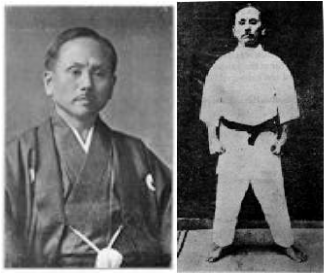
Gichin Funakoshi was born in Shuri, Okinawa in 1868, the same year as Japan's Meiji Restoration. Introduced to karate as a boy, Funakoshi’s early training took place in complete secrecy -- at the time, the Okinawan government had banned the practice of karate. Funakoshi eventually became a schoolteacher, training in karate all the while. In 1903 he was one of several martial artists that assisted in the incorporation of karate into the physical education curriculum in the Shuri school system. In 1922, the Japanese Ministry of Education held a martial arts demonstration in Tokyo; the Okinawan Department of Education asked Funakoshi to introduce Okinawan karate to Japan. Recognizing that the karate he practiced had diverged from the Chinese fighting styles, Funakoshi changed the meaning of "karate" from "Chinese hand" to "empty hand." ("Kara" can also mean "empty".)
Funakoshi did not return to Okinawa. His demonstration made a powerful impression on the Japanese public and he was besieged with requests to further demonstrate and teach his art. In 1935, Funakoshi's supporters had pooled enough funds to erect the first free-standing karate dojo in Japan. The dojo opened the next year, with a sign over the door bearing the dojo's name: Shoto-kan. ("Kan" means "building." "Shoto" means "pine waves," which describes the sound of the wind rustling through pine trees. Funakoshi used the name "Shoto" to sign his calligraphy).
Gichin Funakoshi passed away on April 26, 1957. Since then, Shotokan students have carried on his spirit and teachings. The JKA has well over 100,000 active karate students and over 300 affiliated karate clubs worldwide.
Funakoshi did not return to Okinawa. His demonstration made a powerful impression on the Japanese public and he was besieged with requests to further demonstrate and teach his art. In 1935, Funakoshi's supporters had pooled enough funds to erect the first free-standing karate dojo in Japan. The dojo opened the next year, with a sign over the door bearing the dojo's name: Shoto-kan. ("Kan" means "building." "Shoto" means "pine waves," which describes the sound of the wind rustling through pine trees. Funakoshi used the name "Shoto" to sign his calligraphy).
Gichin Funakoshi passed away on April 26, 1957. Since then, Shotokan students have carried on his spirit and teachings. The JKA has well over 100,000 active karate students and over 300 affiliated karate clubs worldwide.
Shito Ryu
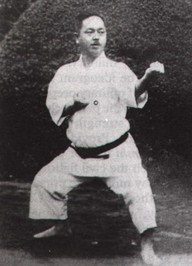
Shito-ryu was founded by Kenwa Mabuni (1887-1952), an Okinawan borne descended from the "Bushi" (warrior) class. Mabuni learned Shuri-Te from Ankoh Itosu (1830-1915) and Naha-Te from Kanryo Higashionna (1853-1915) who mainly studied Kempo in China's Fukien province under Liu Liu Kung. Mabuni Also learned several empty hand katas and Kobudo (weapon) katas from Arakaki (1840-1918) and white crane Kung Fu forms from Woo Yin Gue, a Chinese tea merchant in Okinawa.
After Gichin Funakoshi introduced "Karate" in Japan in 1922, Kenwa Mabuni as a police officer, traveled several times in Japan and tried to spread his knowledge of Okinawa-Te in Japan. Finally he moved to Osaka, Japan in 1928 and started to teach Karate in Japan when Butokukai (then the governing body for martial arts in Japan) started registration for all Karate schools. Mabuni named his style as Hanko-ryu (half-hard style) which he later changed to "Shito-ryu" in honor of his two foremost teachers Itosu and Higashionna (the first kanzi character in 'Itosu' sounds like 'Shi' and that in 'Higashionna' sounds like 'to').
After Gichin Funakoshi introduced "Karate" in Japan in 1922, Kenwa Mabuni as a police officer, traveled several times in Japan and tried to spread his knowledge of Okinawa-Te in Japan. Finally he moved to Osaka, Japan in 1928 and started to teach Karate in Japan when Butokukai (then the governing body for martial arts in Japan) started registration for all Karate schools. Mabuni named his style as Hanko-ryu (half-hard style) which he later changed to "Shito-ryu" in honor of his two foremost teachers Itosu and Higashionna (the first kanzi character in 'Itosu' sounds like 'Shi' and that in 'Higashionna' sounds like 'to').
Wado Ryu
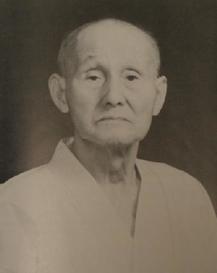
Hironori Otsuka (1892-1982) was born on June 1st, 1892. He began his martial arts
training at the age of six, practicing ju-jutsu under the instruction of his
father. In 1906 he enrolled in the Shinto-Yoshin school of ju-jutsu under
Nakayama Tatsusaburo (1870-1933), a kendo instructor, until 1911. He studied in
various other ju-jutsu schools while he was a student at Waseda University
in Tokyo. He
studied Yoshin Koryu from Kanaya Motoo (circa 1919-21) and in 1922 started
training karate under Funakoshi Gichin (1870-1957) who was sent to Tokyo from Okinawa by the council of Okinawan karate masters. He
also studied karate from Mabuni Kenwa (1889-1952), the founder of Shito-Ryu
Karate, who stayed in Tokyo
during 1928-1929.
In 1934 Master Otsuka started his own school called the Dai
Nippon Karate Shinko Club. It was the chairman of
the Dai Nippon Karate Shinko Club, Eriguchi Eiichi who gave the style of karate
taught the name Wado-Ryu ("Way of Peace", or "Way of Harmony"). In 1940 Wado-ryu Karate-jutsu was registered at the Butokukai, Kyoto, along with Shotokan-Ryu, Shito-Ryu and Goju-Ryu. This occasion is generally considered to be the first official naming of the Karate styles.
Goju Kai
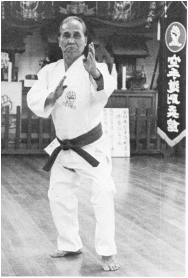
Gogen Yamaguchi was born in Kyushu, Miyazaki Ken, on 20th January 1909. He was introduced to Karate at an early age, but it wasn’t until his family moved to Kyoto while he was in his teens that he began the serious study of karate. While attending Ritsumeikan University, Yamaguchi wrote to Chojun Miyagi and invited him to come to Japan. Yamaguchi immediately fell in love with the intricate patterns displayed by Miyagi and he concentrated on the study of Goju to the exclusion of almost everything else. When Miyagi left to return to Okinawa, he left behind a well-trained and dedicated follower. Miyagi later named Yamaguchi the leader of Goju Ryu on mainland Japan.
Yamaguchi organized the first Karate club at Ritsumeikan University and the first Karate dojo in western Japan in 1930.
Yamaguchi organized the first Karate club at Ritsumeikan University and the first Karate dojo in western Japan in 1930.
Kyokushinkai Kan

Yong I-Choi (Matsutatsu (Mas) Oyama) was born on the 27th of July, 1923). In 1925, Mas Oyama was sent to his sister's home in Manchuria, China and at the age of 9 he began his study of Kempo (Eighteen Hands) from Mr. Yi at his sister's farm in Manchuria.
In 1936 Mas Oyama entered primary school in Seoul, Korea, where he continued the study of Chinese Kempo under Mr. Yi. He gained proficiency in the Eighteen Hands technique and in the second year he achieved the equivalent to 1st Dan (Shodan). Two years later he entered Yamanashi Airway School in Japan and began his study under Gichin Funakoshi and under So Nei Chu, who was also Korean and from the same district as Mas Oyama. So Nei Chu (a student of Chojun Miyagi) was the foremost expert in Goju Karate at the time and is credited with introducing Goju to Japan.
In 1945 Oyama received his 4th Dan (Yondan) ranking under Gichin Funakoshi. In 1947 Mas Oyama entered the first All Japan Championships since World War II, held at Maruyama Gymnasium, Kyoto, and was crowned champion. The following year he returned to his training with Nei chu. He later decided to devote his life to karate and trained alone on Mount Kiyosumi in Chiba to perfect his techniques and to form his karate way. In 1950, Mas Oyama fought a full-sized bull in Chiba after taking up residence in a butcher's establishment. During several exhibitions, Mas Oyama fought and reportedly killed many bulls using shuto strikes to shear off their horns and puching them between the eyes.
Mas Oyama received his 6th Dan (Rokudan) from Gogen Yamagushi (Goju Kai). Oyama named his style, Kyokushinkai Kan (School of Ultimate Truth). In 1969 Mas Oyama organized the First Open Kyokushin Full-Contact Karate Tournament in Tokyo and in 1974 he received his 9th Dan (Kudan) from his world wide branch chiefs. In April of 1994, Sosai Masutatsu Oyama died, leaving behind a popular and widely practiced art.
In 1936 Mas Oyama entered primary school in Seoul, Korea, where he continued the study of Chinese Kempo under Mr. Yi. He gained proficiency in the Eighteen Hands technique and in the second year he achieved the equivalent to 1st Dan (Shodan). Two years later he entered Yamanashi Airway School in Japan and began his study under Gichin Funakoshi and under So Nei Chu, who was also Korean and from the same district as Mas Oyama. So Nei Chu (a student of Chojun Miyagi) was the foremost expert in Goju Karate at the time and is credited with introducing Goju to Japan.
In 1945 Oyama received his 4th Dan (Yondan) ranking under Gichin Funakoshi. In 1947 Mas Oyama entered the first All Japan Championships since World War II, held at Maruyama Gymnasium, Kyoto, and was crowned champion. The following year he returned to his training with Nei chu. He later decided to devote his life to karate and trained alone on Mount Kiyosumi in Chiba to perfect his techniques and to form his karate way. In 1950, Mas Oyama fought a full-sized bull in Chiba after taking up residence in a butcher's establishment. During several exhibitions, Mas Oyama fought and reportedly killed many bulls using shuto strikes to shear off their horns and puching them between the eyes.
Mas Oyama received his 6th Dan (Rokudan) from Gogen Yamagushi (Goju Kai). Oyama named his style, Kyokushinkai Kan (School of Ultimate Truth). In 1969 Mas Oyama organized the First Open Kyokushin Full-Contact Karate Tournament in Tokyo and in 1974 he received his 9th Dan (Kudan) from his world wide branch chiefs. In April of 1994, Sosai Masutatsu Oyama died, leaving behind a popular and widely practiced art.
